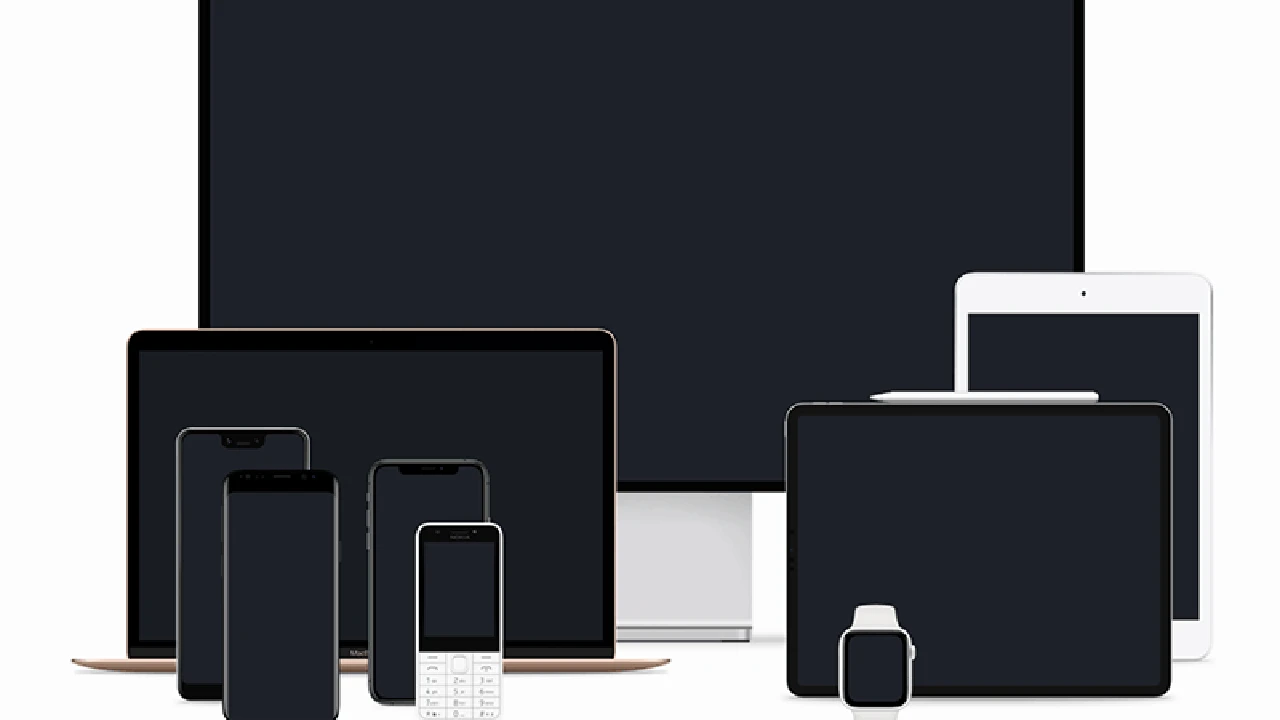Best Hearing Aids with Smart Features
Find out which smart hearing aids offer advanced features for improved hearing and connectivity for seniors.

Best Hearing Aids with Smart Features
Understanding Smart Hearing Aids What Makes Them Smart
Hey there! Let's talk about something super important for many seniors: hearing. It's a big deal, and thankfully, technology has come a long, long way. We're not just talking about basic amplifiers anymore. We're diving into the world of 'smart' hearing aids. So, what exactly makes a hearing aid smart? Think of it like upgrading from a flip phone to a smartphone. Smart hearing aids go beyond just making sounds louder. They connect to your other devices, adapt to different environments, and even offer features that can genuinely improve your quality of life.
At their core, smart hearing aids use advanced digital processing to analyze soundscapes in real-time. This means they can differentiate between speech and background noise, automatically adjusting to give you clarity where you need it most. But the 'smart' part really kicks in with their connectivity. Many models now boast Bluetooth capabilities, allowing them to stream audio directly from your phone, TV, or even a tablet. Imagine taking a call and hearing the person's voice crystal clear, right in your ear, without any buzzing or distortion. Or watching your favorite show with the sound piped directly to your hearing aids, making dialogue crisp and clear.
Beyond basic streaming, some smart hearing aids come with companion apps for your smartphone. These apps give you incredible control. You can adjust volume, switch between different listening programs (like 'restaurant mode' or 'music mode'), and even fine-tune settings to your personal preferences. Some even have features like 'find my hearing aid' – super handy if you ever misplace them! The goal here is not just to help you hear better, but to integrate seamlessly into your daily life, making communication and entertainment more accessible and enjoyable.
Key Features to Look For in Smart Hearing Aids Connectivity and Control
When you're looking at smart hearing aids, there are a few key features that really stand out and can make a huge difference in your experience. Let's break them down:
Bluetooth Connectivity Seamless Audio Streaming
This is probably the most common and sought-after smart feature. Bluetooth allows your hearing aids to connect wirelessly to other devices. This means you can stream phone calls, music, podcasts, and even TV audio directly into your ears. It's fantastic for clarity, as it bypasses the need for external speakers and reduces background noise. For seniors, this can be a game-changer for staying connected with loved ones through phone calls or enjoying entertainment without disturbing others.
Smartphone App Control Personalized Listening Experience
Most smart hearing aids come with a dedicated app for your smartphone (both iOS and Android). These apps are incredibly powerful. They allow you to:
- Adjust Volume: Fine-tune the volume for each ear independently.
- Change Programs: Switch between pre-set listening programs for different environments (e.g., quiet, noisy, music, car).
- Customize Settings: Some apps allow you to personalize settings like bass and treble, or even create custom programs for specific situations.
- Remote Support: Many brands offer remote adjustments by your audiologist through the app, saving you trips to the clinic.
- Battery Status: Check the battery life of your hearing aids.
- Find My Hearing Aid: A lifesaver if you misplace them!
Environmental Adaptability Automatic Sound Adjustments
Truly smart hearing aids don't just amplify everything. They use sophisticated algorithms to analyze your surroundings and automatically adjust their settings. This means they can:
- Reduce Background Noise: In a noisy restaurant, they'll focus on speech and suppress the clatter.
- Enhance Speech: In a quiet conversation, they'll prioritize the human voice.
- Directional Microphones: Many have microphones that can focus on sounds coming from in front of you, helping you hear conversations better in crowded places.
Rechargeability Convenience and Eco-Friendliness
While not strictly a 'smart' feature in terms of connectivity, rechargeable hearing aids are a huge convenience. No more fumbling with tiny batteries! Most come with a charging case that can provide a full day's power on a single charge, and some cases even offer portable charging on the go. This is a big plus for ease of use and reduces waste.
Telecoil and T-Coil Compatibility Public Loop Systems
For those who frequent public venues like theaters, churches, or lecture halls, a telecoil (or T-coil) is invaluable. It allows your hearing aids to connect directly to public loop systems, streaming audio directly to your ears without background noise. It's like having a personal sound system in public spaces.
Health Tracking and Fall Detection Beyond Hearing
Some of the newest smart hearing aids are integrating health tracking features. This can include tracking your steps, monitoring your heart rate, and even detecting falls and alerting pre-selected contacts. This adds an extra layer of safety and wellness monitoring, making them more than just hearing devices.
Top Smart Hearing Aid Brands and Models A Comparative Review
Alright, let's get into some specific recommendations. The hearing aid market is vast, but a few brands consistently lead the way with their smart features and overall performance. Keep in mind that prices can vary significantly based on features, technology level, and where you purchase them. It's always best to consult with an audiologist to find the perfect fit for your specific hearing loss and lifestyle.
1. Phonak Paradise Series (e.g., Audeo Paradise P90)
What makes them smart: Phonak is a powerhouse in smart hearing aids, and their Paradise series is a prime example. They offer universal Bluetooth connectivity, meaning they can connect to virtually any Bluetooth-enabled device, not just specific smartphones. This is a huge advantage. They also boast excellent sound quality with their AutoSense OS 4.0, which automatically adapts to different sound environments. The MyPhonak app provides comprehensive control, and some models even have a motion sensor for better sound processing when you're moving.
Key Features:
- Universal Bluetooth connectivity (connects to iOS, Android, and other Bluetooth devices)
- Exceptional sound quality with AutoSense OS 4.0
- Tap Control for answering calls, pausing streaming, and activating voice assistants
- Rechargeable options available
- MyPhonak app for personalized control and remote support
- Motion sensor hearing (select models)
Ideal for: Active seniors who want seamless connectivity across all their devices, excellent sound quality in varied environments, and intuitive control.
Estimated Price Range: $2,500 - $7,000 per hearing aid (depending on technology level and provider).
2. Oticon More Series (e.g., More 1)
What makes them smart: Oticon More hearing aids are unique because they use a Deep Neural Network (DNN) to process sound. Instead of just focusing on speech from the front, they give your brain access to all relevant sounds in your environment, allowing your brain to decide what to focus on. This 'MoreSound Intelligence' is a game-changer for natural sound perception. They also offer direct streaming from iOS and select Android devices, and a user-friendly app.
Key Features:
- Deep Neural Network (DNN) for a more natural sound experience
- MoreSound Intelligence for 360-degree sound processing
- Direct streaming from iOS and select Android devices
- Rechargeable miniRITE R style
- Oticon ON app for control, remote support, and 'Find My Hearing Aid'
- Connects to Oticon's TV Adapter for direct TV streaming
Ideal for: Seniors who prioritize a natural and immersive sound experience, especially in complex listening environments, and appreciate advanced AI processing.
Estimated Price Range: $2,000 - $6,500 per hearing aid.
3. ReSound ONE Series (e.g., ONE 9)
What makes them smart: ReSound ONE introduces a revolutionary M&RIE (Microphone & Receiver-In-Ear) design, which places a third microphone directly in the ear canal. This leverages your ear's natural shape to collect sound, providing a more natural and individualized sound experience. They offer excellent streaming capabilities for both iOS and Android, and the ReSound Smart 3D app is highly intuitive, allowing for personalized sound adjustments and even remote care.
Key Features:
- M&RIE design for a more natural sound experience
- Direct streaming from iOS and Android devices
- ReSound Smart 3D app for comprehensive control and remote care
- Rechargeable options available
- All Access Directionality for better speech understanding in noise
- Tinnitus management features
Ideal for: Seniors seeking a highly natural sound experience, robust streaming, and a user-friendly app with strong remote support options.
Estimated Price Range: $2,000 - $6,000 per hearing aid.
4. Starkey Livio AI and Evolv AI Series (e.g., Evolv AI 2400)
What makes them smart: Starkey's AI-powered hearing aids are truly at the forefront of smart features. Beyond excellent sound quality and streaming, they integrate health tracking. The Livio AI and Evolv AI models can track physical activity, brain health (by monitoring active listening), and even detect falls, sending alerts to pre-selected contacts. They also offer translation features and a 'Thrive Care' app for caregivers to monitor usage and activity.
Key Features:
- Integrated health tracking (steps, brain health, fall detection)
- Edge Mode for on-demand sound optimization in challenging environments
- Translation feature (translates languages in real-time)
- Direct streaming from iOS and Android devices
- Rechargeable options
- Thrive app for control and Thrive Care app for caregivers
- TeleHealth capabilities for remote adjustments
Ideal for: Seniors who want their hearing aids to do more than just amplify sound, including health monitoring, safety features, and advanced AI capabilities.
Estimated Price Range: $2,500 - $7,500 per hearing aid.
5. Widex Moment Series (e.g., Moment 440)
What makes them smart: Widex Moment hearing aids are known for their incredibly natural sound quality, thanks to their 'ZeroDelay' technology, which virtually eliminates the processing delay that can make amplified sound feel artificial. This results in a very pure and natural listening experience. They offer direct streaming from iOS and select Android devices, and the Widex Moment app provides intuitive control and personalized soundscapes.
Key Features:
- ZeroDelay technology for natural sound processing
- PureSound for a clear and uncolored sound experience
- Direct streaming from iOS and select Android devices
- Rechargeable options available
- Widex Moment app for control and personalized soundscapes
- SoundSense Learn for AI-powered sound personalization
Ideal for: Seniors who prioritize the most natural and pure sound quality, especially those who find traditional hearing aid sound artificial.
Estimated Price Range: $2,000 - $6,500 per hearing aid.
Choosing the Right Smart Hearing Aid Personal Needs and Lifestyle
Picking the 'best' smart hearing aid isn't a one-size-fits-all situation. It really comes down to your individual hearing loss, your lifestyle, and what features are most important to you. Here are some things to consider:
Your Hearing Loss Severity and Type
First and foremost, your audiologist will conduct a comprehensive hearing test to determine the type and degree of your hearing loss. This is crucial because different hearing aids are designed to address different needs. Some are better for mild to moderate loss, while others are powerful enough for severe to profound loss. Your audiologist will guide you on what styles (e.g., behind-the-ear, in-the-canal) and power levels are appropriate.
Your Lifestyle and Daily Activities
Think about your typical day. Are you:
- Very active and social? You'll benefit from excellent noise reduction and environmental adaptability.
- Spending a lot of time at home? Connectivity for TV and phone calls might be a higher priority.
- Tech-savvy? You'll likely enjoy the advanced app controls and health tracking features.
- Concerned about safety? Fall detection and remote monitoring features could be very appealing.
Connectivity Needs What Devices Do You Use
Do you have an iPhone or an Android phone? Do you frequently use a tablet, watch TV, or listen to music? Ensure the hearing aids you choose offer seamless connectivity with your existing devices. Universal Bluetooth (like Phonak) offers the most flexibility, while others might be more specific to iOS or certain Android models.
Ease of Use and Maintenance User Friendliness
Consider how comfortable you are with technology. Some smart hearing aids have more complex apps and features than others. If you prefer simplicity, look for models with intuitive controls and easy-to-use apps. Rechargeability is a big plus for many seniors, as it eliminates the hassle of changing tiny batteries.
Budget and Insurance Coverage Financial Considerations
Smart hearing aids are an investment. Prices can range significantly. It's important to discuss your budget with your audiologist. Also, check with your insurance provider to see what, if any, coverage they offer for hearing aids. Some plans offer partial coverage, while others might not cover them at all. Don't forget to factor in the cost of accessories like chargers, remote microphones, or TV adapters.
Trial Periods and Follow-Up Care Importance of Professional Support
Most reputable audiologists offer a trial period for hearing aids. This is incredibly important! It allows you to try the hearing aids in your real-world environments and ensure they meet your needs. During this period, your audiologist can make adjustments and fine-tune the settings. Ongoing follow-up care and adjustments are crucial for long-term success with hearing aids, so choose a provider who offers excellent support.
Maximizing Your Smart Hearing Aid Experience Tips and Tricks
Once you have your smart hearing aids, there are a few things you can do to get the most out of them and truly enhance your hearing experience.
Regular Cleaning and Maintenance Extend Lifespan
Just like any electronic device, hearing aids need regular cleaning. Wax and debris can block microphones and receivers, affecting performance. Your audiologist will show you how to clean them properly, but generally, a soft brush and a wax pick are all you need. Store them in their charging case or a dry kit when not in use to protect them from moisture.
Utilize the Companion App Full Control at Your Fingertips
Don't be afraid to explore the features of your hearing aid's companion app. It's designed to give you control and personalize your listening experience. Experiment with different programs, adjust the volume, and try out any advanced features like noise reduction or speech focus. The more you use the app, the more comfortable you'll become with it.
Practice in Different Environments Adapt and Learn
Your hearing aids are smart, but they also learn from your preferences. Wear them consistently in various environments – quiet settings, noisy restaurants, social gatherings. This helps the hearing aids adapt to your unique listening needs and allows you to identify situations where you might need to make manual adjustments via the app.
Take Advantage of Accessories Enhance Functionality
Many smart hearing aid brands offer a range of accessories that can further enhance your experience:
- TV Adapters: Stream TV audio directly to your hearing aids for crystal-clear sound.
- Remote Microphones: Great for one-on-one conversations in noisy environments or for hearing a speaker from a distance.
- Remote Controls: If you prefer not to use your smartphone, a dedicated remote control can offer basic adjustments.
Communicate with Your Audiologist Ongoing Support
Your audiologist is your best resource. If you're experiencing any issues, discomfort, or if you feel your hearing aids aren't performing as well as they should be, don't hesitate to schedule an appointment. They can make fine-tune adjustments, update firmware, and provide valuable advice to ensure you're getting the most out of your smart hearing aids. Remember, hearing aid fitting is an ongoing process, not a one-time event.
Be Patient and Persistent Adjustment Period
It takes time to adjust to new hearing aids, especially if it's your first time. Your brain needs to re-learn how to process sounds it hasn't heard clearly in a while. Be patient with yourself during this adjustment period. Wear them consistently, even if it feels a bit overwhelming at first. The benefits will become more apparent over time as your brain adapts.
Smart hearing aids are truly transformative devices, offering not just improved hearing but also enhanced connectivity, convenience, and even safety features. By understanding what makes them smart and choosing the right model for your needs, you can significantly improve your quality of life and stay connected to the world around you.
:max_bytes(150000):strip_icc()/277019-baked-pork-chops-with-cream-of-mushroom-soup-DDMFS-beauty-4x3-BG-7505-5762b731cf30447d9cbbbbbf387beafa.jpg)






